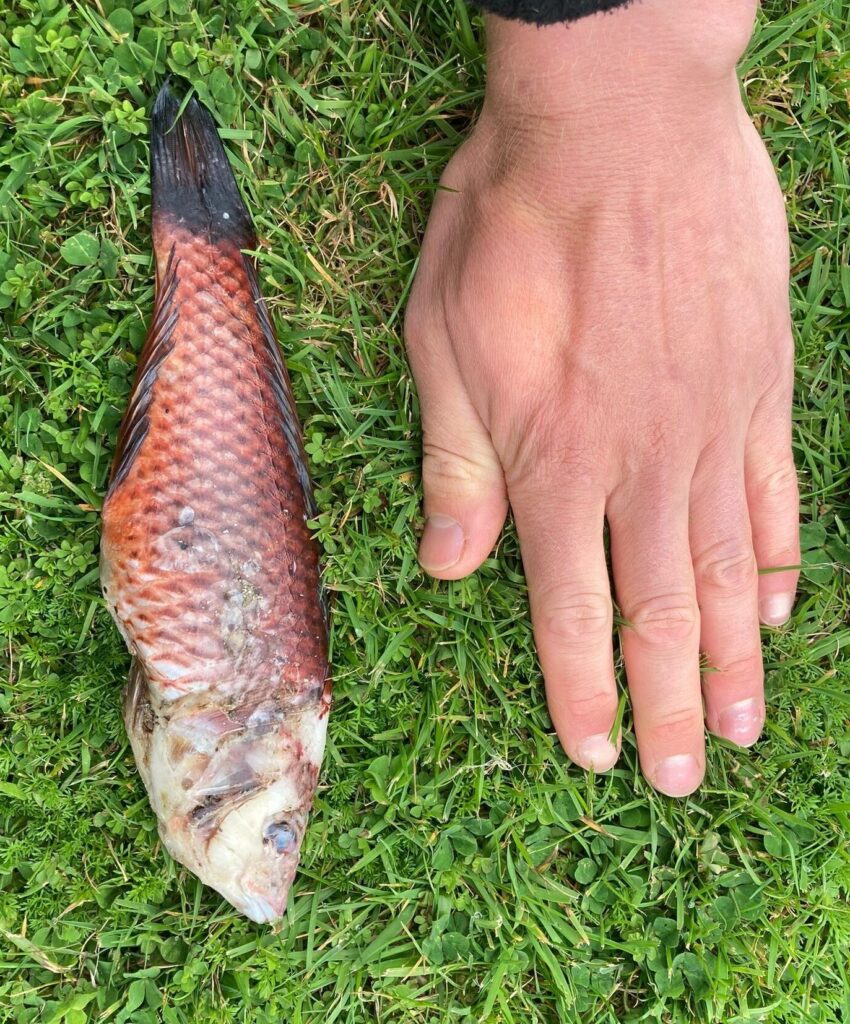Case Study
"We have a fish identification mystery on hand. Non-specific e-DNA methods have not enabled us to rule out my biggest fear…"
(Danielle Shanahan, Zealandia’s CEO.)

Introduction: A Mysterious Intruder in Paradise
The Challenge: A Potential Threat Could Undermine Restoration Efforts
Zealandia's mission to revert its ecosystems to their pre-human state was possibly in jeopardy when a blurry photograph suggested the presence of goldfish or carp—a known invasive species. This sighting had the potential to threaten years of arduous work by the sanctuary’s staff and volunteers, who had already seen promising signs of ecological recovery:
“The team worked incredibly hard for many years to plan and implement the lower lake restoration and removal of Eurasian Perch, so getting indication that there may be a noxious species in the lake was of high concern” explained Jo Ledington, Zealandia’s General Manager of Conservation and Restoration. “We had already started to see indication of the ecosystem recovering – invertebrate life was more abundant than we’d ever seen, large numbers of dragonflies and damselflies were being seen and for the first time we were seeing schools of galaxiids / banded kokopu in the lake and stream. The thought of this being compromised was really difficult for the team.”
The Zealandia team sought to either confirm or dispel their fears, without causing undue disturbance to the habitat they have worked so hard to rehabilitate.
Cawthron’s Approach: Precision and Partnership
Outcome: No Invasive Species Detected
Between November 2023 and February 2024, 24 samples were analysed at Cawthron’s molecular lab. The results were a relief to the Zealandia team:
No Trace of Invasive Species: All samples received tested negative providing strong evidence that goldfish and koi carp are not present in the Zealandia Reservoir. It is important to note that due to the possibility of false negative results, a lack of eDNA detection does not absolutely prove the absence of a species in an environment. More eDNA testing and/or sampling using traditional approaches could increase certainty.
Unexpected Discovery: A further sighting led to the identification of a scarlet wrasse, dropped by shags flying into roost sites in the sanctuary—likely the source of the original sighting. This identification provided further reassurance. The vigilance of Zealandia staff and volunteers remains a critical component of an effective restoration project.
Impact: Peace of Mind
The use of eDNA provided rapid reassurances and peace of mind, allowing the focus to remain on ecosystem restoration rather than invasive species eradication:
“Relief! We’re really grateful for the support and to have these tools available in the toolbox. This provided quick reassurance that noxious fish species aren’t present and allowed us to focus on ecosystem restoration rather than months of monitoring.”Conclusion: Future-Focused Conservation
This case study underscores the value of eDNA as a conservation tool, offering rapid, reliable insights that support proactive environmental management. For more information on implementing eDNA in your conservation projects, contact the Cawthron Institute today.




